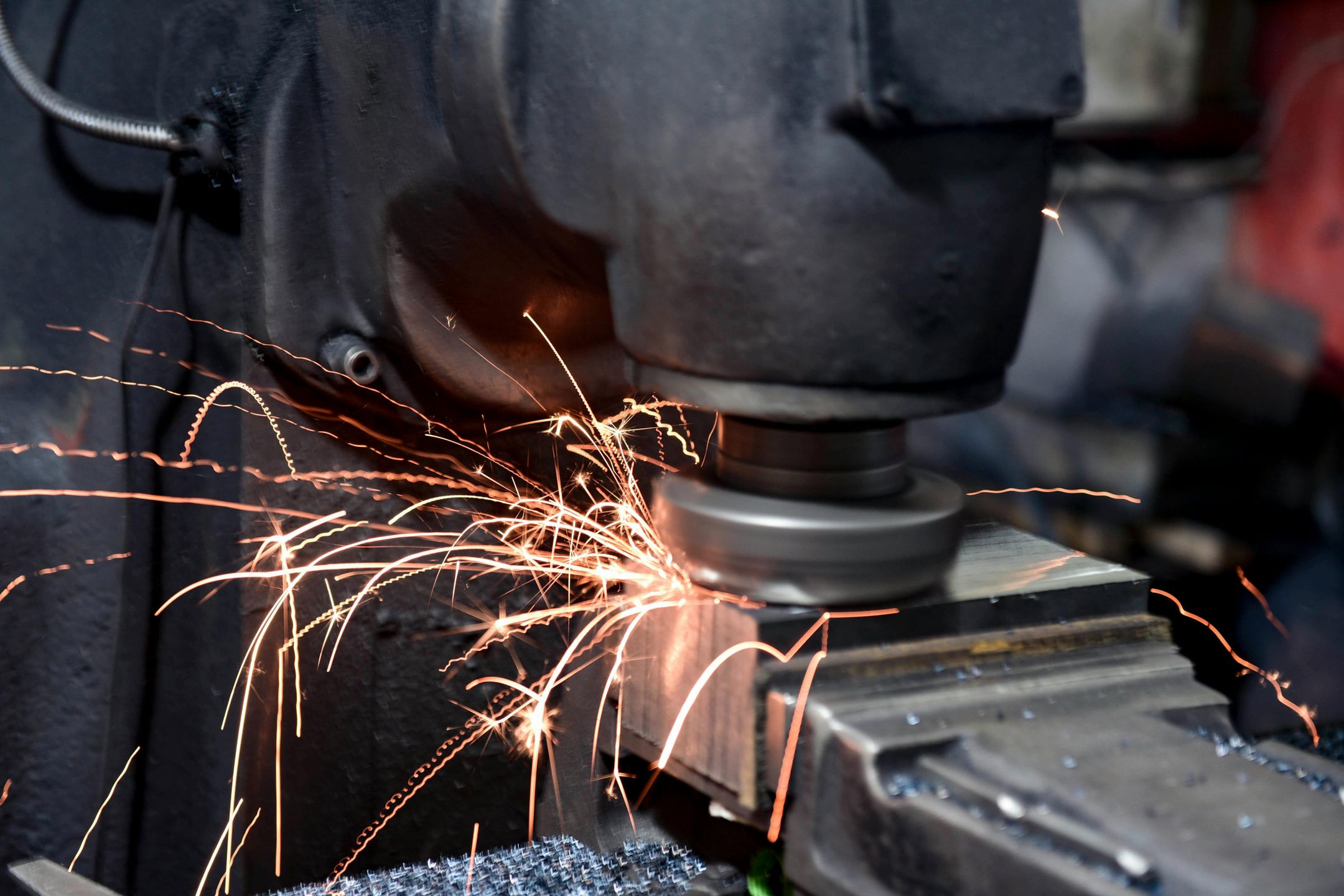
Get A Quote
Decoding CNC Lathes: Your Essential Guide
Exploring the World of CNC Lathes
The CNC lathe represents the pinnacle of machining precision, engineered meticulously for CNC turning and manufacturing using Computer Numerical Control (CNC).
By merging traditional lathe principles with state-of-the-art computer programming, this machine epitomizes technological advancement. This fusion results in unmatched levels of accuracy and efficiency in machining tasks.
The impact of CNC lathes resonates throughout various industries and machine shops, fundamentally transforming material manipulation. Its ability to execute intricate cutting and shaping operations with unrivaled precision cements its status as a crucial asset in modern manufacturing.
From metal to plastic to wood, the CNC lathe's adaptability knows no bounds. It serves as a symbol of innovation, pushing manufacturing processes to new frontiers and solidifying its role as an indispensable tool in today's industrial landscape.
Unraveling the Intricacies of CNC Lathe Operations
Embarking on a journey into the inner workings of a CNC lathe machine unveils a harmonious blend of precision engineering and computerized mastery. Unlike its manual counterpart, where craftsmanship relies heavily on human touch, the CNC lathe integrates advanced technology to elevate precision and efficiency to unprecedented levels. Here's a comprehensive breakdown of its operational process:
1. Design Phase: The journey commences with the creation of a meticulous design using CAD (Computer-Aided Design) software. This design encapsulates every aspect of the desired part, ranging from dimensions to intricate shapes.
2. Programming: The CAD design undergoes a transformation into G-code, the universal language comprehensible to CNC machines. This intricate code serves as the blueprint, dictating every movement and action required to craft the part.
3. Setup: With the programming in place, the CNC lathe is meticulously set up for action. This involves the careful selection and installation of cutting tools, along with the secure fixation of the workpiece onto the machine's platform.
4. Machining Process: With preparations complete, the CNC lathe springs into action. Guided by the intricate G-code instructions, it orchestrates a symphony of movements. The workpiece rotates at dizzying speeds, while the cutting tool maneuvers across multiple axes, sculpting the material with unrivaled precision.
5. Quality Check: Throughout the machining process, the CNC lathe remains vigilant, continuously monitoring cutting conditions. It makes real-time adjustments as needed to uphold precision and accuracy. Upon completion, the final part undergoes a rigorous inspection, ensuring alignment with the original design specifications.
In essence, the CNC lathe epitomizes the pinnacle of modern engineering prowess, seamlessly merging human ingenuity with technological sophistication to usher in a new era of precision manufacturing.
Exploring the Essential Components of a CNC Lathe Machine
A CNC lathe machine is a sophisticated assembly of integral components, each playing a vital role in its precise and efficient operation. Delving into the intricacies of these components provides valuable insights into the functionality of these remarkable machines. Here's a detailed breakdown of the key parts:
1. Main Spindle: Serving as the core of the lathe, the main spindle securely holds and rotates the workpiece during machining processes.
2. Chuck: This essential device firmly clamps the workpiece onto the spindle, ensuring stability and accuracy throughout the machining operation.
3. Tailstock: Providing crucial support for longer workpieces, the tailstock enhances stability and alignment during machining, resulting in consistent and precise outcomes.
4. Tool Turret: A pivotal component, the tool turret houses an array of cutting tools and rotates to position the desired tool for optimal machining performance.
5. Control Panel (CNC Controller): Serving as the nerve center of the CNC lathe, the control panel facilitates the input of G-code instructions and manages the machine's operations with precision.
6. Bed: Acting as the sturdy foundation of the lathe, the bed supports and aligns all major components, ensuring stability and accuracy during machining processes.
7. Carriage: The carriage moves along the bed, carrying the cutting tool and guiding it along the workpiece, enabling precise and controlled machining operations.
8. Headstock: Housing the main spindle, the headstock also contains the gear mechanism responsible for controlling spindle speed, essential for achieving optimal machining results.
9. Coolant System: Vital for temperature management and tool longevity, the coolant system delivers coolant to the cutting area, ensuring efficient heat dissipation and chip evacuation.
10. Chip Conveyor: Responsible for maintaining a clean and safe work environment, the chip conveyor removes metal chips produced during machining, preventing clutter and promoting uninterrupted operation.
Together, these key components form the intricate anatomy of a CNC lathe machine, enabling it to deliver unparalleled precision, efficiency, and versatility in modern manufacturing processes.
Exploring the Diversity of CNC Lathe Models
In the realm of CNC lathes, a variety of configurations cater to specific machining requirements. Understanding these distinctions is pivotal for selecting the ideal machine for your endeavors. Here's a comprehensive overview of the primary types:
1. 2-Axis CNC Lathe:
- Axis: X and Z.
- Capabilities: Turning, facing, drilling, grooving, and parting.
- Ideal Projects: Symmetrical components, general manufacturing tasks.
2. 3-Axis CNC Lathe:
- Includes: Y-axis.
- Capabilities: Complex turning, off-center drilling, advanced shaping, multi-process machining.
- Ideal Projects: Intricate geometries, precision components, bespoke manufacturing.
3. 4-Axis CNC Lathe:
- Incorporates: Typically the C-axis.
- Capabilities: Complex contours, precision engraving, off-center drilling, multi-process machining.
- Ideal Projects: Advanced aerospace parts, automotive components, specialized manufacturing.
4. 5-Axis CNC Lathe:
- Adds: Usually the A and B axes.
- Capabilities: Complex 3D shapes, simultaneous cutting, high-precision tasks.
- Ideal Projects: Aerospace and defense applications, medical device production, customized prototyping.
5. 6 or More Axis CNC Lathe:
- Offers: Unparalleled flexibility and precision.
- Capabilities: Ultra-precise components, intricate tool paths, multifaceted manufacturing.
- Ideal Projects: Advanced engineering ventures, complex industrial parts, cutting-edge research initiatives.
By comprehending the nuances of these CNC lathe models, you can align your machining objectives with the most suitable equipment, ensuring optimal outcomes and productivity in your projects.
Operations Performed on a CNC Lathe
CNC lathes are versatile machines capable of executing a wide range of operations, each contributing to the creation of precise and intricate parts. Here's an overview of the operations commonly performed on a CNC lathe:
1. Turning: The process of removing material from the exterior of a workpiece to create cylindrical shapes with precise dimensions.
2. Facing: Cutting flat surfaces at the end or along the length of the workpiece to achieve specific geometries and dimensions.
3. Drilling: Creating holes in the workpiece using a drill bit for accommodating fasteners or other components.
4. Boring: Enlarging existing holes with precision to achieve desired diameters and depths for optimal fit and functionality.
5. Reaming: Enhancing the accuracy and surface finish of drilled holes through a secondary finishing process.
6. Threading: Cutting internal or external threads onto the workpiece to enable assembly with threaded components such as screws or nuts.
7. Knurling: Creating a textured, cross-patterned surface on the workpiece to improve grip and functionality.
8. Grooving: Precision cutting of narrow grooves along the workpiece for functional or aesthetic purposes.
9. Parting or Cutoff: Separating a specific part from the rest of the workpiece to facilitate further processing or assembly.
10. CNC Milling: Incorporating milling operations into CNC lathes, especially those equipped with additional axes, to create features off the main axis of the part.
11. Chamfering: Beveling the edges of the workpiece to remove sharp corners and improve aesthetics and functionality.
12. Eccentric Turning: Producing off-center or non-symmetrical shapes for specialized applications.
13. Tapping: Forming internal threads using a tapping tool to enable secure fastening of threaded components.
These operations highlight the versatility and precision of CNC lathes, making them indispensable tools in modern manufacturing processes across various industries.
Accuracy of a CNC Lathe
CNC lathes are renowned for their exceptional precision, achieving accuracy levels as tight as ±0.0005 inches (±0.0127 mm). This remarkable precision is critical in industries such as aerospace, medical devices, and automotive manufacturing, where even the slightest deviation can impact performance and safety.
In addition to precision, CNC lathes offer outstanding repeatability, ensuring that each part produced is consistent with minimal variation. This consistency is invaluable for large-scale production runs, where uniformity and reliability are paramount for meeting quality standards and customer expectations.
Lifespan of a CNC Lathe
Typically, a CNC lathe operates for 10 to 15 years. However, with regular maintenance and proper care, many machines continue to function efficiently long after this period, ensuring sustained productivity and performance for businesses.
Optimizing CNC Lathe Programming and Operation
Maximizing the efficiency and precision of your CNC lathe requires mastering best practices in programming and operation. Here's a comprehensive guide to help you streamline your processes and achieve optimal results:
1. Understand Your Machine: Gain a thorough understanding of your CNC lathe's capabilities and limitations to make informed decisions during programming and operation.
2. Software Selection:
- CAD Software: Design intricate parts accurately.
- CAM Software: Generate precise machine instructions (G-code) from CAD designs.
- CNC Simulation Software: Simulate machining processes to identify and rectify errors before execution.
3. Programming Methods:
- Direct Programming: Make on-the-spot adjustments for simpler tasks.
- Off-line Programming: Utilize CAD/CAM systems for complex operations and detailed planning.
4. Optimize Toolpaths: Minimize machining time while maintaining cut quality by optimizing toolpaths.
5. Tool Selection and Setup: Choose the appropriate tools and set them up correctly to achieve desired results.
6. Material Considerations: Adjust programming parameters to accommodate the specific properties of the material being machined.
7. Test Runs and Simulations: Validate programs through simulations to ensure accuracy and efficiency before actual machining.
8. Regular Maintenance: Conduct routine checks and maintenance to keep your CNC lathe in optimal working condition, minimizing downtime and errors.
9. Stay Updated: Keep your software up-to-date to access the latest features and improvements.
10. Troubleshooting:
- Familiarize yourself with common issues and develop troubleshooting skills to address them promptly.
- Document and analyze errors to identify root causes and prevent recurrence.
11. Prioritize Safety: Adhere to safety protocols and guidelines to protect yourself and others in the workplace.
12. Documentation: Maintain detailed records of programming, setup, and machining operations for reference and analysis.
13. Continuous Learning: Stay informed about advancements in CNC technology and machining techniques through training and professional development opportunities.
By following these best practices, you can optimize CNC lathe programming and operation, enhancing productivity, efficiency, and quality in your machining processes.
Distinguishing Between CNC Lathes and Regular Lathes
To make informed decisions about your machining needs, it's crucial to understand the differences between CNC lathes and regular lathes:
1. Control System:
- CNC Lathes: Controlled by computerized systems, enabling automated operation.
- Regular Lathes: Operated manually, with machinists controlling adjustments and operations.
2. Precision and Accuracy:
- CNC Lathes: Offer superior precision and consistency due to computerized control.
- Regular Lathes: Precision may vary based on the operator's skill level and manual adjustments.
3. Complexity of Operations:
- CNC Lathes: Capable of executing complex tasks and intricate designs seamlessly.
- Regular Lathes: Primarily used for simpler machining operations, with limited capability for complex tasks.
4. Production Speed and Efficiency:
- CNC Lathes: Operate at higher speeds and are more efficient, ideal for high-volume production.
- Regular Lathes: Typically have slower production rates and require more manual intervention.
5. Skill Requirements:
- CNC Lathes: Require knowledge of programming and software for efficient operation.
- Regular Lathes: Reliance on traditional machining skills, such as manual adjustments and feed rates.
Understanding these distinctions will help you choose the right lathe for your machining projects, whether it's a CNC lathe for intricate designs or a regular lathe for simpler tasks.
The End
In summary, the CNC lathe machine represents a pivotal advancement in modern manufacturing, delivering unmatched precision and efficiency across diverse industries.
Armed with a thorough grasp of CNC lathe operation, longevity factors, and disparities from traditional lathes, businesses and operators are empowered to navigate the machining realm with certainty. By harnessing the sophisticated technology and capabilities of CNC lathes, they can enhance productivity while maintaining uncompromising standards of quality and precision.


